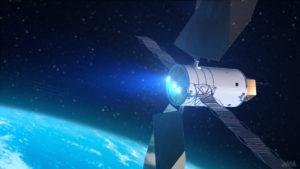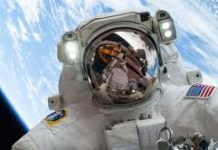 Technical challenges aren’t the only difficulty for a manned mission to Mars; the social side is expected to be equally challenging. That’s why NASA has invested over $2.5 million in research performed at the Hawaii Space Exploration Analog and Simulation (HI-SEAS) facility. In addition to replicating the strenuous conditions of isolated life on a mission to Mars, HI-SEAS is particularly interested in assessing the risks that arise from interpersonal relationships on such a long mission in space. A team of six scientists emerged from one such isolation experiment on Sunday, September 17, reported the Washington Post [https://www.washingtonpost.com/national/health-science/mars-research-crew-emerges-after-8-months-of-isolation/2017/09/17/ff3bc626-9c0c-11e7-b2a7-bc70b6f98089_story.html].
Technical challenges aren’t the only difficulty for a manned mission to Mars; the social side is expected to be equally challenging. That’s why NASA has invested over $2.5 million in research performed at the Hawaii Space Exploration Analog and Simulation (HI-SEAS) facility. In addition to replicating the strenuous conditions of isolated life on a mission to Mars, HI-SEAS is particularly interested in assessing the risks that arise from interpersonal relationships on such a long mission in space. A team of six scientists emerged from one such isolation experiment on Sunday, September 17, reported the Washington Post [https://www.washingtonpost.com/national/health-science/mars-research-crew-emerges-after-8-months-of-isolation/2017/09/17/ff3bc626-9c0c-11e7-b2a7-bc70b6f98089_story.html].
“There are certainly human factors to be figured out, that’s part of what HI-SEAS is for,” said IT specialist Laura Lark from within their simulated habitat. The team is equipped with sensors to determine the crew member’s moods, stress levels, and could even detect if members were arguing or avoiding each other. Even though the crew had undergone extensive selection and compatibility tests, lead investigator Kim Binsted stated, “We’ve learned, for one thing, that conflict, even in the best of teams, is going to arise,” and indicating that learning how to deal with such conflict is vital to the success of such long-term missions. The simulation also included the testing of stress coping mechanisms including the use of virtual reality, which allowed crew members to take ‘vacations’ to various landscapes.
Of course, the mission wasn’t limited merely to interpersonal relationships, it also included scientific duties and was exacerbated by issues that would be expected on a real mission to Mars. To start, all communications with the outside world included a 20-minute delay – the length of time for a signal to travel from Earth to Mars. Crew members also had to wear space suits while working outside of their confined dome, a 1,200 square foot space for the six crew members. During the experiment, the team collected geological data, grew fresh produce, and maintained their habitat’s operational status with no outside help.
Many people consider a manned mission to Mars to be a stepping stone to the stars for humanity. NASA aims to send a manned mission to Mars in the 2030s and tests like this one will be crucial to a successful mission.
Home Hawaii Space Exploration Analog and Simulation In preparation for a trip to Mars, scientists spend 8 months in...





